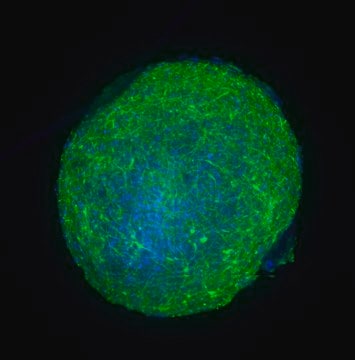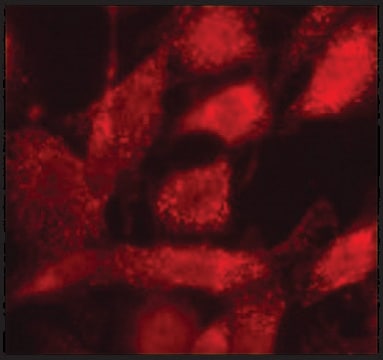PEROX1
Peroxisome Isolation Kit
isolate peroxisomes from tissues and cells
Synonyme(s) :
Isolation Kit for Peroxisomes, Kit for Peroxisomes, Peroxisome Kit
About This Item
Produits recommandés
Niveau de qualité
Technique(s)
centrifugation: suitable
fractionation: suitable
Conditions d'expédition
wet ice
Température de stockage
2-8°C
Description générale
Application
Caractéristiques et avantages
- Specially formulated extraction reagents for research scale applications - save time and minimize waste
- Produces functional intact organelles - resulting peroxisomes are suitable for functional studies, metabolic assays, protein profiling, and disease state analysis
- Compatible with products for structure confirmation - easily confirm intactness with companion test kit, Cytochrome C Reductase Assay Kit (Cat. No. CY0100)
Autres remarques
Informations légales
Composants de kit également disponibles séparément
- P8340Protease Inhibitor Cocktail, for use with mammalian cell and tissue extracts, DMSO solutionFDS
Mention d'avertissement
Warning
Mentions de danger
Conseils de prudence
Classification des risques
Eye Irrit. 2 - Met. Corr. 1 - Skin Irrit. 2
Code de la classe de stockage
8A - Combustible corrosive hazardous materials
Point d'éclair (°F)
188.6 °F - closed cup
Point d'éclair (°C)
87 °C - closed cup
Certificats d'analyse (COA)
Recherchez un Certificats d'analyse (COA) en saisissant le numéro de lot du produit. Les numéros de lot figurent sur l'étiquette du produit après les mots "Lot" ou "Batch".
Déjà en possession de ce produit ?
Retrouvez la documentation relative aux produits que vous avez récemment achetés dans la Bibliothèque de documents.
Les clients ont également consulté
Articles
Centrifugation separates organelles based on size, shape, and density, facilitating subcellular fractionation across various samples.
Notre équipe de scientifiques dispose d'une expérience dans tous les secteurs de la recherche, notamment en sciences de la vie, science des matériaux, synthèse chimique, chromatographie, analyse et dans de nombreux autres domaines..
Contacter notre Service technique










